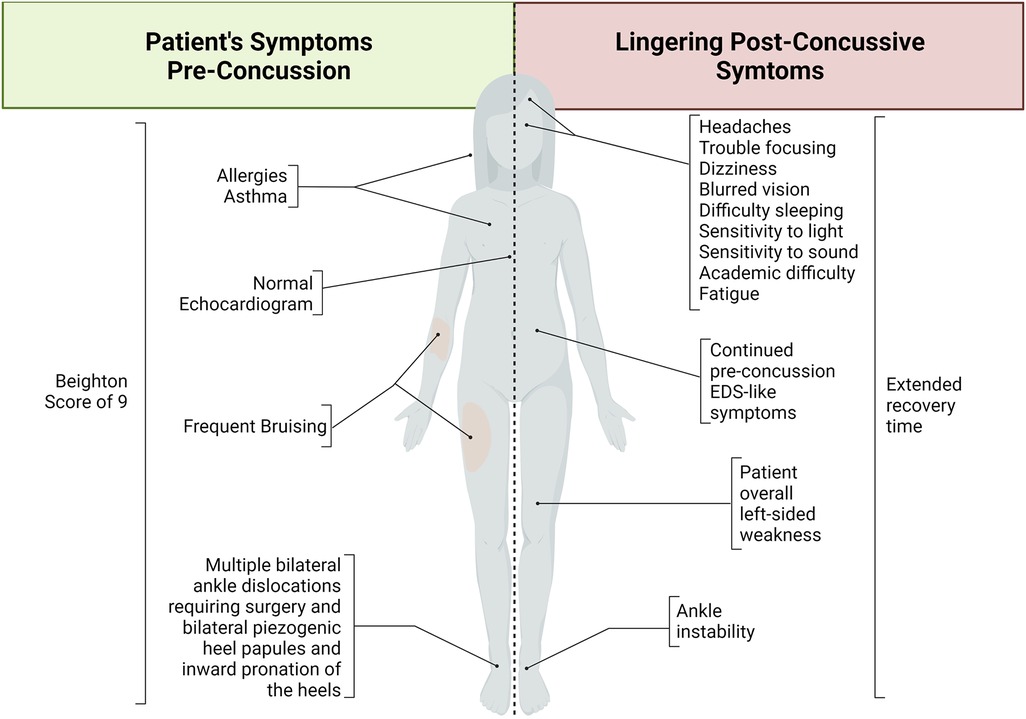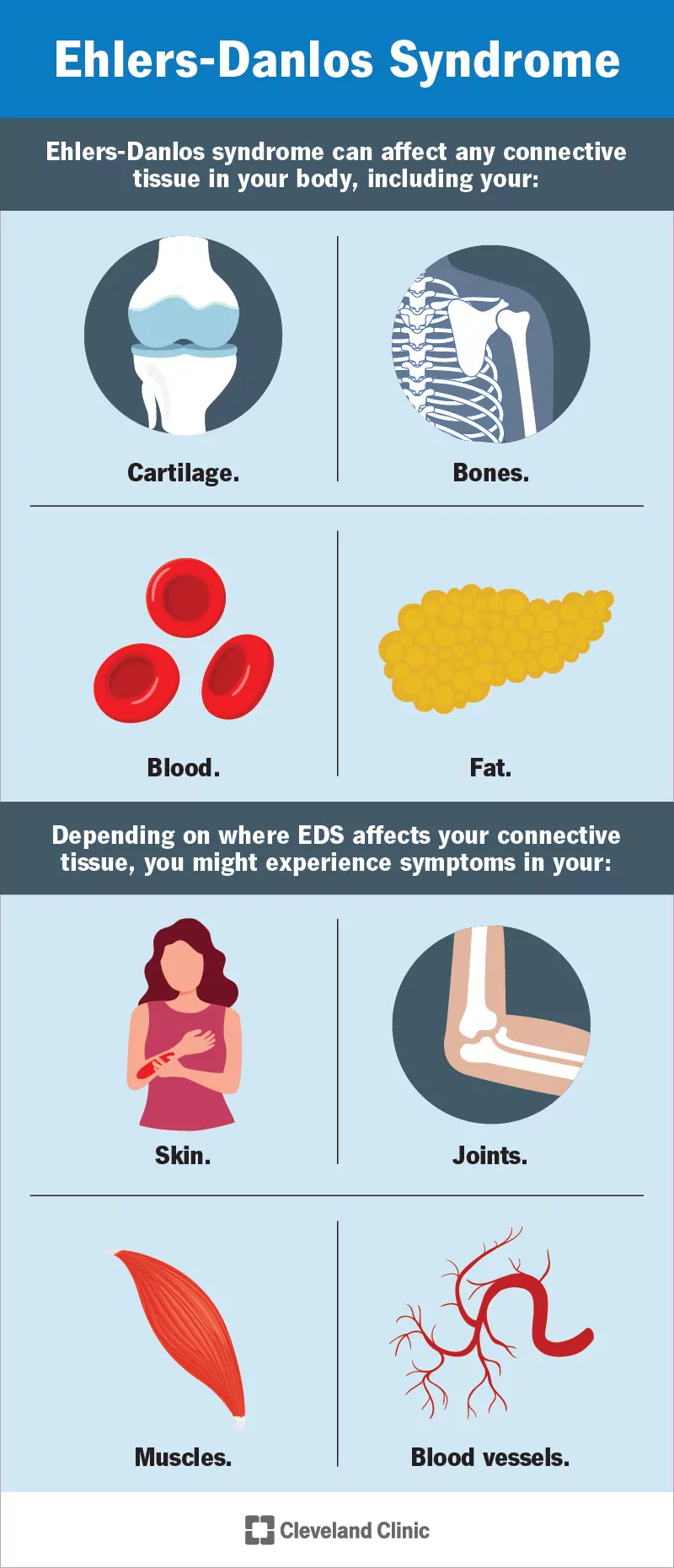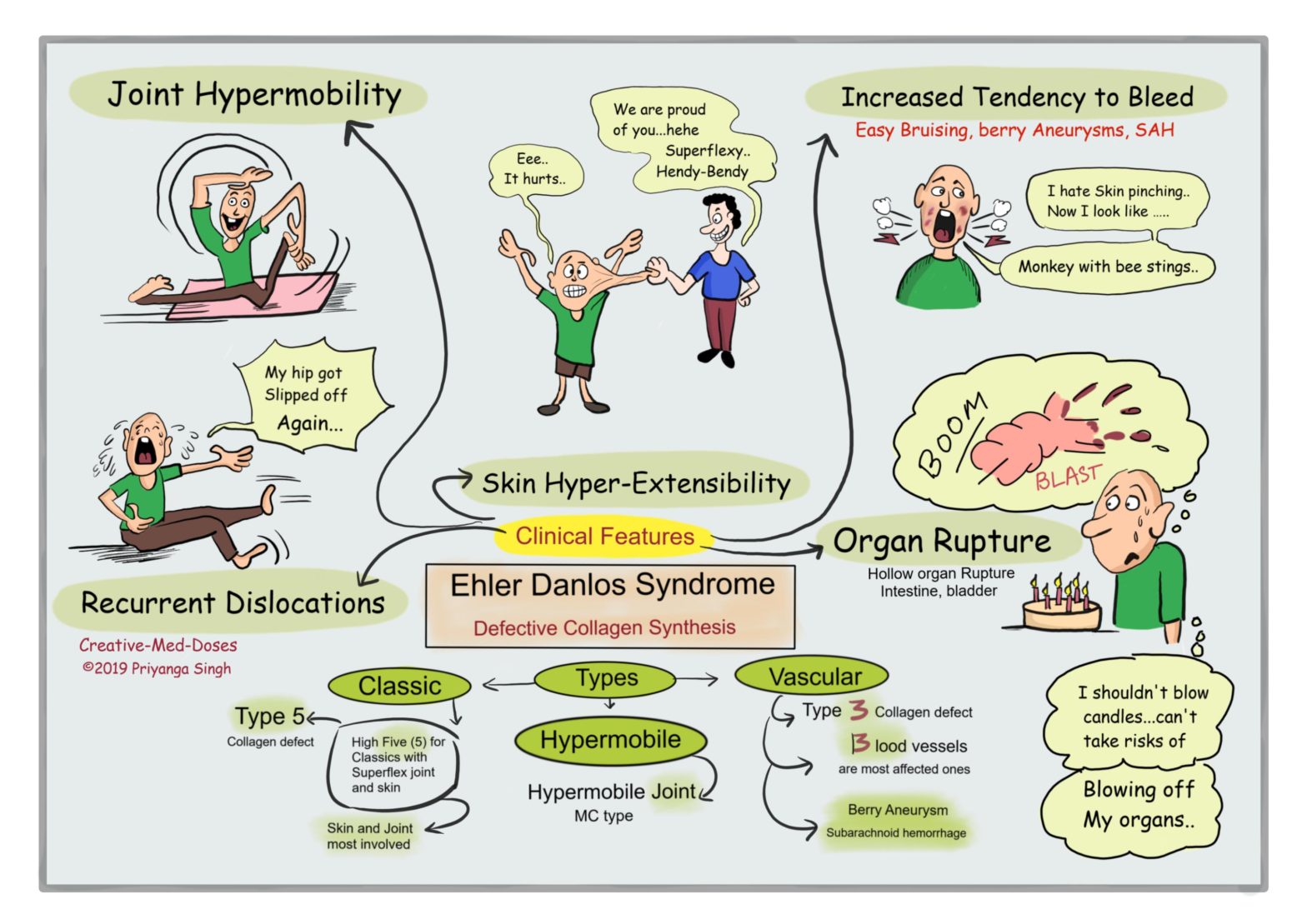Table of Contents
- Frontiers | Case report: Lingering post-concussive symptoms in a ...
- Spinal Deformity in Ehlers–Danlos Syndrome: Focus on ...
- What Is Ehlers Danlos Syndrome
- Ehlers-Danlos Syndrome (EDS) - Creative Med Doses
- Ehlers Danlos Syndrome Type 5
- What is Ehlers-Danlos Syndrome? | Greenberg Regenerative Medicine
- Demystifying Ehlers Danlos Syndrome - Hospital Professional News
- Ēlersa-Danlosa Sindroms: Simptomi, Cēloņi Un ārstēšana - LV SFOMC
- Ehlers Danlos Syndrome Rheumatology Captions Pages - vrogue.co
- Molecular diagnosis in vascular Ehlers-Danlos syndrome predicts pattern ...



What is Ehlers-Danlos Syndrome?



Types of Ehlers-Danlos Syndrome


Symptoms of Ehlers-Danlos Syndrome
The symptoms of EDS vary depending on the subtype, but common symptoms include: Extremely flexible joints Skin that stretches much more than usual Easy bruising and poor wound healing Joint pain and musculoskeletal pain Gastrointestinal problems, such as constipation and abdominal pain Cardiovascular problems, such as mitral valve prolapse and aortic root dilatation
Diagnosis and Treatment
Diagnosing EDS can be challenging, as the symptoms can be similar to those of other conditions. A diagnosis is typically made through a combination of physical examination, medical history, and genetic testing. Treatment for EDS usually involves a multidisciplinary approach, including physical therapy, occupational therapy, and pain management. In some cases, surgery may be necessary to repair damaged tissues or stabilize joints.
Living with Ehlers-Danlos Syndrome
While there is no cure for EDS, there are many ways to manage the symptoms and improve quality of life. This includes: Maintaining a healthy lifestyle, including regular exercise and a balanced diet Avoiding activities that exacerbate joint pain and instability Using assistive devices, such as canes or wheelchairs, to reduce strain on joints Seeking support from family, friends, and support groups In conclusion, Ehlers-Danlos syndrome is a complex and multifaceted condition that requires a comprehensive approach to diagnosis and treatment. By understanding the symptoms, types, and treatment options, individuals with EDS can better manage their condition and improve their overall quality of life. If you or a loved one is affected by EDS, it is essential to seek medical attention and support to ensure the best possible outcome.References:
Ehlers-Danlos syndrome - Wikipedia Ehlers-Danlos syndrome - Mayo Clinic Ehlers-Danlos Syndrome - National Center for Biotechnology Information Note: This article is for informational purposes only and should not be considered as medical advice. If you or a loved one is affected by Ehlers-Danlos syndrome, please consult a healthcare professional for proper diagnosis and treatment.